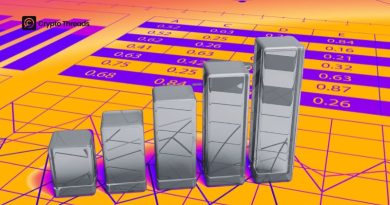Coding vs. No-Code Algorithm Trading: Which Path is Right for You
Navigating the world of algorithmic trading often brings traders to a crossroads: no-code or traditional coding? This guide aims to demystify both paths, helping you align your choice with your personal goals in this dynamic field. The internet offers a wealth of libraries and tools, many available for free experimentation. By the end of this piece, you’ll have a clearer picture of the available tools and a better sense of which direction suits your preferences.
Quick Recap: What is Algorithmic Trading?
Algorithmic trading, also known as quant trading or automated trading, isn’t as complex as it sounds at its core. Essentially, it involves creating a set of predefined trading rules that a program follows to execute trades based on your signals. Think of it like giving a computer a very specific instruction manual for buying and selling.
These signals can be derived from various methods:
- Technical analysis: “If the price crosses above the 50-day moving average, and the RSI indicator is below 30, then buy.”
- Statistical arbitrage: “If the price difference between Stock A and Stock B, which usually move together, becomes too wide, buy the cheaper one and sell the pricier one.”
- Signal processing: More advanced mathematical ways to find patterns.
Regardless of the specific approach, the foundation lies in objective, definable rules that can be rigorously backtested once implemented. The benefits are significant: you can objectively evaluate strategy performance, fine-tune parameters, and much more, all thanks to this systematic approach.
Path 1: The “No-Code” or “Low-Code” Approach
This path is often an excellent starting point for beginners. Many no-code platforms boast substantial community support, providing newcomers with nearly everything needed to start developing their own strategies. These platforms typically offer built-in technical analysis toolboxes and benefit from community contributions, which can aid even more advanced efforts to extend your trading system. The goal is to make the journey from idea to production faster and less frustrating, allowing you to concentrate on the trading logic itself.
However, despite these appealing perks, no-code platforms come with certain drawbacks to consider:
- Opacity: Many platforms are closed-source. You might not fully understand what’s happening ‘under the hood’ when your strategy runs.
- Performance Limitations: They might not be fast enough for certain strategies, like high-frequency trading (HFT), which demands high-performance execution environments generally unsupported by no-code solutions.
- Platform Lock-in: Some tools only operate on specific platforms, potentially limiting your flexibility.
- Cost: While many offer free tiers, accessing the best features or more robust capabilities often requires a paid subscription.
Here are a few popular no-code/low-code platforms and what they typically offer a beginner:
- TradingView (using its visual tools or simple Pine Script):
You get a chart, and you can click to add common indicators like “Moving Averages” or “RSI.” For basic automation (alerts or simple strategies if your broker is supported), you might use a simplified scripting language (Pine Script) where you write a few lines like if close > moving_average then alert(“Buy signal”). Some brokers integrate directly, allowing these alerts to trigger trades.
- Capitalise.ai:
A text box where you type your trading strategy in plain English. The platform translates this into trading actions. You could type: “If Apple’s stock price drops by 2% today, buy 10 shares. But if it goes up by 3% after buying, sell it.” The platform handles the “how.”
- MetaTrader 4/5 (using visual builders or pre-made Expert Advisors – EAs):
While it has its own coding language (MQL), many users buy or download pre-built trading robots (EAs). Some tools also offer a visual interface where you connect blocks representing trading actions (e.g., “check indicator,” “place order”). You might download an EA that claims to trade based on a moving average crossover. You attach it to a chart, set a few parameters (like how much to trade), and it runs. Or, with a visual builder, you drag a “Moving Average Cross” block, connect it to a “Buy Order” block.
Path 2: The “Coding” Approach
For those with programming experience, or individuals aiming for a professional, deeply customized trading setup, the coding approach often proves superior for several reasons:
- Full Control & Transparency: You dictate precisely what your code does. You see exactly how it works—no black boxes.
- Maximum Flexibility: This path offers unparalleled flexibility and customization, allowing you to modify or build any component.
- Leverage Open Source: You don’t always have to start from scratch. Numerous open-source libraries on platforms like GitHub can be cloned and adapted.
- Complexity Handling: Your system’s sophistication is limited only by your coding skills and understanding.
The learning curve can be steep. Building robust automated trading systems is challenging, requiring significant problem-solving skills. The potential for subtle, costly errors is a major drawback, especially for those new to coding, as automation is arguably the most demanding part.
Popular languages and open-source tools for this path, and what they allow you to do:
- Python (with libraries like Pandas, NumPy, Backtrader, CCXT):
Some pros it offers to traders are:
- Pandas helps you organize and analyze price data (like an advanced spreadsheet in code).
- Backtrader lets you write code to define your strategy (e.g., “if condition_A and condition_B: self.buy()”) and then test it on historical data.
- CCXT allows your Python code to talk directly to cryptocurrency exchanges to get prices or place orders.
- QuantConnect (supports Python, C#):
- What it provides: A platform where you write your strategy in code (like Python). It handles getting data, backtesting, and can connect to brokers for live trading. It provides a structured “framework” or set of pre-built functions to make common tasks easier (like getting historical data or placing an order).
- Example for a beginner: You’d write Python code within their environment. They provide functions like self.SetCash(100000) (to set starting capital for a backtest) or self.MarketOrder(“SPY”, 100) (to place a market order for 100 shares of SPY). You focus on the strategy logic (the “if this, then that” part).
- R (with libraries for time series and finance):
- What it provides: Similar to Python, R is a programming language, particularly strong for statistical analysis. You’d write code to perform complex statistical tests on price data to find trading opportunities.
- Example for a beginner: You might write R code to see if two stocks are “cointegrated” (meaning their prices tend to move together). If they are, and their prices diverge significantly, your code could signal a trade to bet on them returning to their normal relationship.
Making Your Decision: Which Path is Right For You?
Generally, if you’re serious about long-term algorithmic trading and view programming as a valuable skill that can benefit various career paths, the coding approach is likely the most rewarding. For simpler simulations, side projects, or straightforward strategies, however, a no-code/low-code solution can be more time-efficient and perfectly adequate for anyone.
Can You Start No-Code and Switch to Coding?
Absolutely. Starting with a no-code platform can be a fantastic way to formalize your trading logic within a structured environment. This process itself hones problem-solving skills that are transferable to coding. For many beginners, this is often an ideal stepping stone.
However, whichever route you choose, cultivating the right mindset is crucial for success in algorithmic trading.
It’s wise to start small and simple, building upon a basic idea through iteration rather than attempting a complex system from day one. Before any real-world application, you must rigorously backtest your strategy to validate its logic and understand potential drawdowns. Paramount to this process is prioritizing risk management; never deploy a strategy with real capital without first implementing clear rules for stop-losses and position sizing. This journey demands patience, as refining profitable strategies takes time and effort, and requires embracing continuous learning to keep pace with evolving markets. Ultimately, it’s crucial to remember that there is no “holy grail”—successful algo trading is not about finding guaranteed profits, but about skillfully managing probabilities, maintaining a statistical edge, and exercising unwavering discipline.
Conclusion
Ultimately, the choice between no-code and coding for algorithmic trading isn’t about which is universally ‘better,’ but which is ‘better for you’ right now. Consider your current technical skills, your long-term ambitions in trading, the complexity of the strategies you envision, and the time you’re willing to invest.
No-code offers a quicker entry and is excellent for validating ideas, while coding provides ultimate power and flexibility for those prepared for a steeper learning curve. Many traders even find value in using both approaches at different times or for different purposes. The most important step is to start, learn, and adapt along your trading journey. If you find this article useful, you should check out our series of trading articles from backtest DCA strategy to how to read chart.



